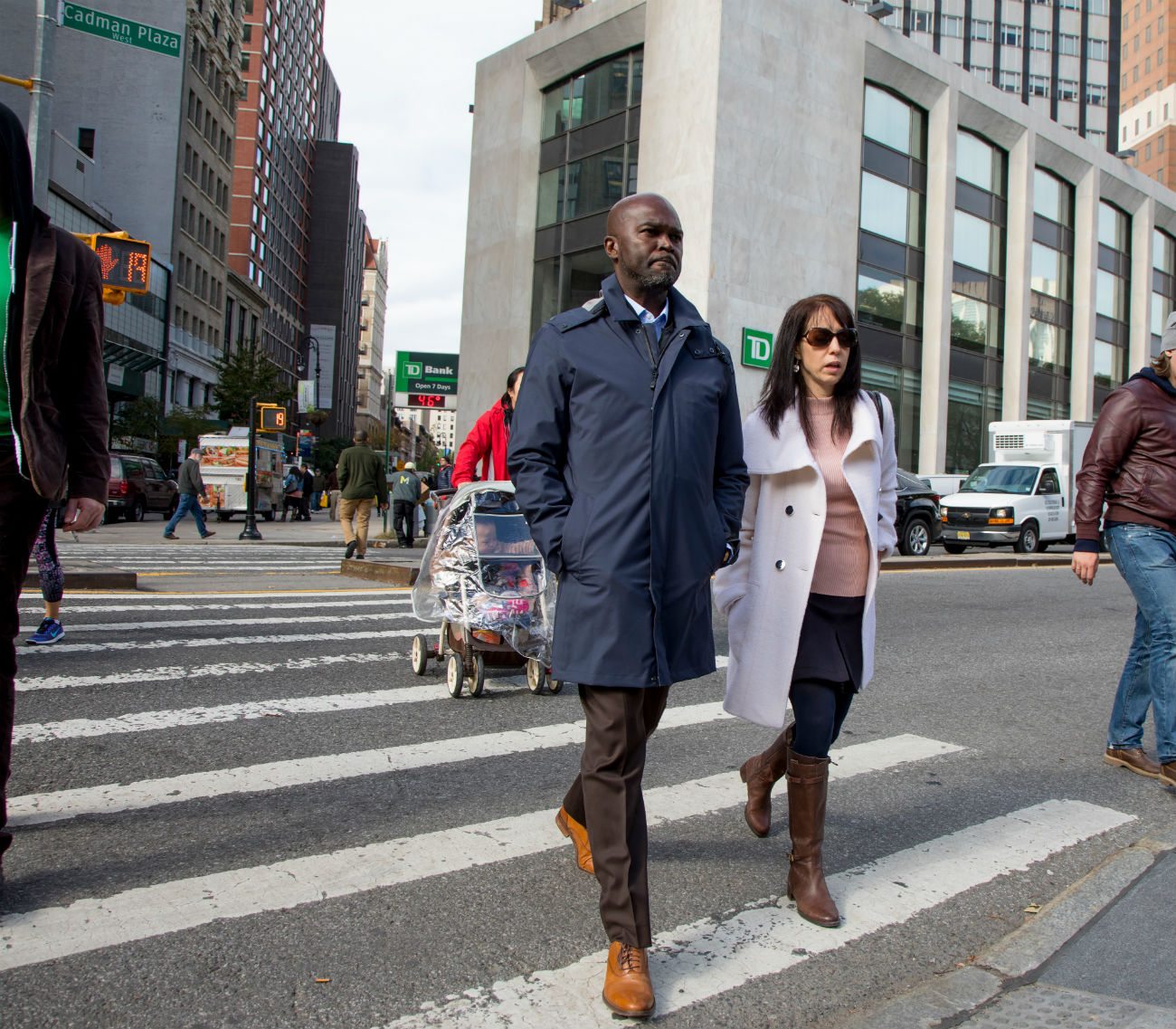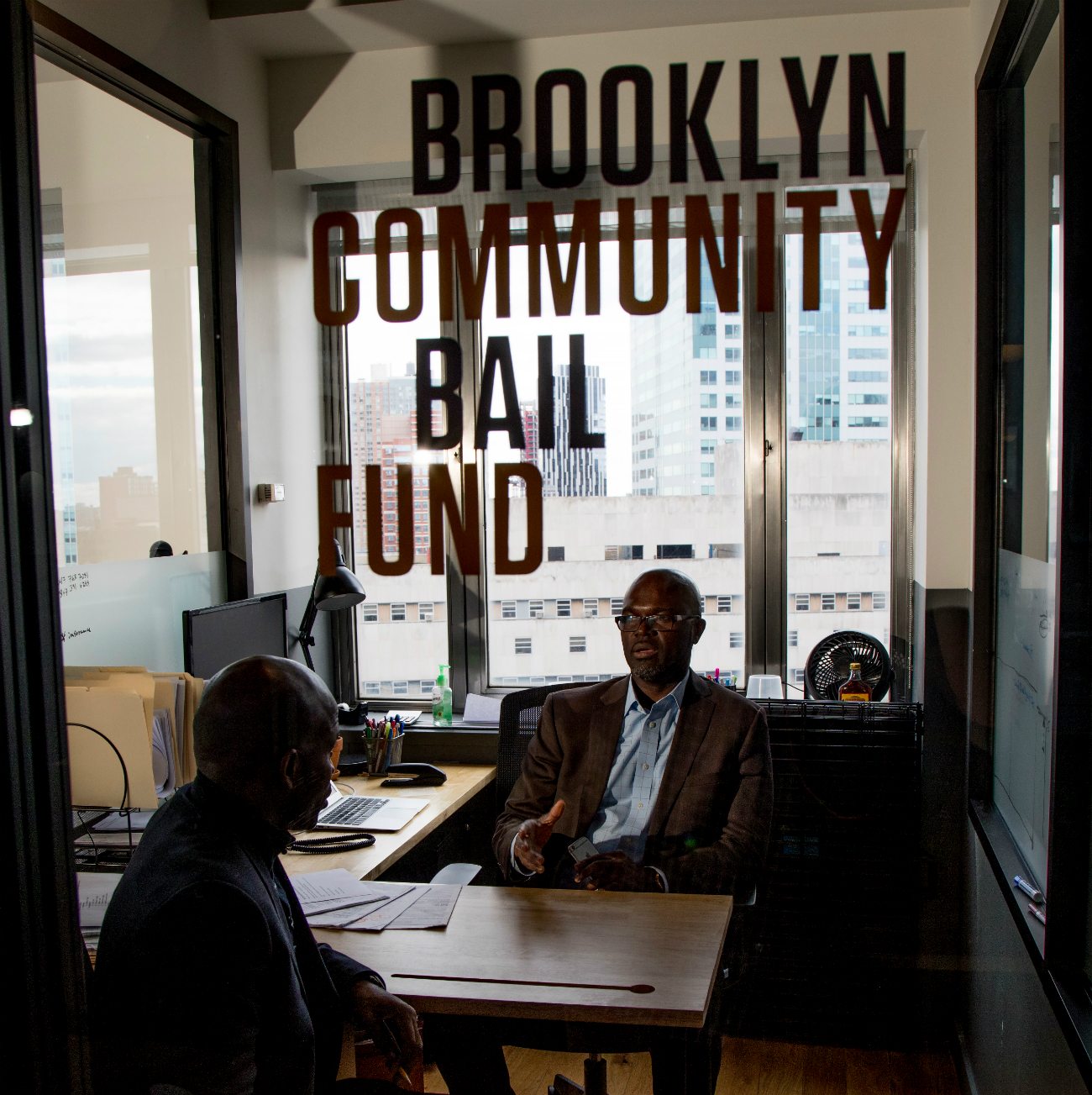BROOKLYN, N.Y.—A framed quotation hangs on one wall of the windowless space Wesley Caines shares with two office mates at the Brooklyn Defenders Service.
“Re-entry starts when the cuffs go on,” reads the plaque, which was presented to Caines as a farewell gift from a group of law school interns.
“Apparently I said that,” Caines says with a shrug. “Who knew?”
Caines arrived at the public defenders’ office in late 2014, hired to help ex-offenders make the transition to mainstream life after incarceration at Rikers Island, the state-run detention complex in New York City.
It’s a transition Caines himself had to make.
Convicted of second-degree murder, he served 24 years in state correctional facilities prior to the parole that sent him home to the Bronx in May 2014. He didn’t leave the system empty-handed, though; he held two college degrees.
The bachelor’s degree came from Bard College, earned through Caines’ involvement in an innovative, prison-based postsecondary program called the Bard Prison Initiative (BPI). Caines was among the graduates in BPI’s first class, all inmates at the Eastern Correctional Facility in Napanoch, N.Y. Caines’ other college credential, a “counseling-based” master’s degree from the New York Theological Seminary, was earned on a campus that the seminary operates at Sing Sing, the maximum-security facility located on the Hudson River 40 miles north of New York City.

Once he got parole, Caines recalls, his first inclination was to “run as far from the system as I possibly could as soon as I got home.” He fought that inclination, however, instead choosing a path that would allow him to use his own experience to help other ex-offenders. He accepted the Brooklyn Defender Services’ offer to create the re-entry program.
“I thought this might put me on the ground floor to shape (re-entry) differently,” says Caines.
As the motto on his office wall suggests, Caines and his Brooklyn Defender Services colleagues take an as-soon-as-possible approach to the process of re-entry. Caines jump-starts the conversation at the first opportunity, conferring with the newly arrested within days, if not hours, of arraignment—sometimes via a jailhouse telecommunications link.
“Someone who moves through the system will ultimately be released back to society,” Caines reasons.
“If we’re waiting to address the core issues until they’re discharged from prison or jail, it’s too late. There’s all this time in between that’s ripe for intervention, time to provide programming and opportunity for change and transformation.”
Caines acknowledges the disadvantages of discussing a re-entry plan before a person’s guilt or innocence has officially been determined. But in many instances, he says, the legal outcome is immaterial.
“Just the fact that people find themselves in the back of a police car in handcuffs is an indication there are some factors in their lives that cause concern,” Caines says. “Even if they’re not guilty of the offense, it’s worthwhile to analyze what is going on in their life … to look at how they came onto the radar of the police.”
In making that analysis, Caines enlists the support of individuals who can be key allies in the effort to reverse what is often a downward spiral: family members.
“I like to connect with the families because the families have the trust and love of our clients,” he explains. “If the family buys into what I’m trying to do with the client, then I have a partner in having this person evaluate their choices and their life.”

Caines also seeks to give his clients—who often face financial hardship—a little breathing room in which to make better choices. He serves on the board of the Brooklyn Community Bail Fund, a nonprofit start-up that covers amounts up to $2,000 to provide bail to indigent, misdemeanor defendants who might otherwise linger at Rikers Island until their cases come to trial.
“If you can’t make $500 bail, then there is so much else going on in your life that the justice system is criminalizing poverty,” he says.
Caines sees the proactive bail fund as an important complement to his efforts to ease re-entry for ex-offenders. And he is unambiguous about what he sees as the most important factor in making sure his clients succeed on the outside: a pathway to and through postsecondary education.
“If we are looking to make good citizens of people who have had criminal justice involvement,” he insists, “there is no greater thing we can do than to educate them.”
